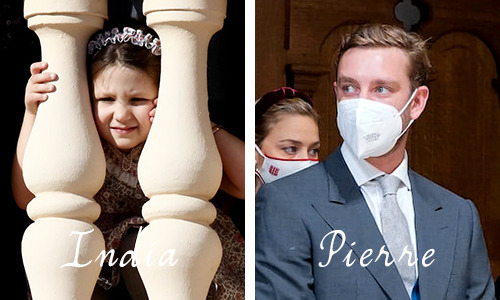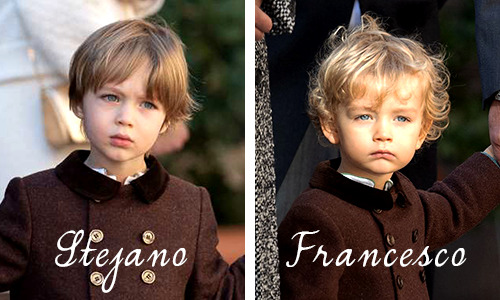#pierre of polignac
Explore tagged Tumblr posts
Text

On February 7, 1958, at the fourth Bal de la Rose. Prince Rainier III and Princess Grace sat opposite each other. Prince Pierre was seated to the left of the Princess. © Monte-Carlo SBM Archives
11 notes
·
View notes
Text

From L-R: Maria Callas, unknown lady, Princess Grace of Monaco and Prince Pierre of Polignac during holidays c. 1960.
#grace kelly#princess grace#royals#royalty#monaco#grace de monaco#maria callas#holidays#pierre of polignac
9 notes
·
View notes
Text


Buste du Comte Jean de Polignac (1888-1943) installé au pied de l'Eglise Saint-Pierre Saint-Paul de Guidel (1960), Bretagne, mai 2024.
Who knows ^^)
2 notes
·
View notes
Text

Grace Kelly dancing with Pierre de Polignac
2 notes
·
View notes
Quote
Poulenc – Organ Concerto After his earlier harpsichord concerto [”Concerto champêtre”] and double piano concerto, Poulenc opted away from the lighthearted and cheery for something a bit more ambitious and boarder-line spiritual. This went against Princess Edmond de Polignac’s wishes when she commissioned the work, though being a lover of music and patron to several French composers at the time, I’m sure she still loved the final product. This work may have also been inspired by the restoration of Poulenc’s Christian faith, a faith he had come back to after his close friend, Pierre-Octave Ferroud, passed away. After that tragic accident, Poulenc took a pilgrimage to the Black Virgin of Rocamadour. This trip also inspired him to start writing religious music, and the tone of these sacred works can be felt in this concerto, along with the grandiose drama of the organ, and juxtaposing the theatric and spiritual with lighthearted Parisian street dances. The concerto is in one continuous movement with tempo indicators: 1. Andante 2. Allegro giocoso 3. Subito andante moderato 4. Tempo allegro. Molto agitatio 5. Très calme: Lent 6. Tempo de l’allegro initial 7. Tempo d’introduction: Largo
mikrokosmos: Poulenc – Organ Concerto After his earlier harpsichord concerto [”Concerto champêtre”] and double piano concerto, Poulenc opted away from the lighthearted and cheery for something a bit more ambitious and boarder-line spiritual. This went against Princess Edmond de Polignac’s wishes when she commissioned the work, though being a lover of music and patron to…
0 notes
Quote
Poulenc – Organ Concerto After his earlier harpsichord concerto [”Concerto champêtre”] and double piano concerto, Poulenc opted away from the lighthearted and cheery for something a bit more ambitious and boarder-line spiritual. This went against Princess Edmond de Polignac’s wishes when she commissioned the work, though being a lover of music and patron to several French composers at the time, I’m sure she still loved the final product. This work may have also been inspired by the restoration of Poulenc’s Christian faith, a faith he had come back to after his close friend, Pierre-Octave Ferroud, passed away. After that tragic accident, Poulenc took a pilgrimage to the Black Virgin of Rocamadour. This trip also inspired him to start writing religious music, and the tone of these sacred works can be felt in this concerto, along with the grandiose drama of the organ, and juxtaposing the theatric and spiritual with lighthearted Parisian street dances. The concerto is in one continuous movement with tempo indicators: 1. Andante 2. Allegro giocoso 3. Subito andante moderato 4. Tempo allegro. Molto agitatio 5. Très calme: Lent 6. Tempo de l’allegro initial 7. Tempo d’introduction: Largo
mikrokosmos: Poulenc – Organ Concerto After his earlier harpsichord concerto [”Concerto champêtre”] and double piano concerto, Poulenc opted away from the lighthearted and cheery for something a bit more ambitious and boarder-line spiritual. This went against Princess Edmond de Polignac’s wishes when she commissioned the work, though being a lover of music and patron to…
0 notes
Quote
Poulenc – Organ Concerto After his earlier harpsichord concerto [”Concerto champêtre”] and double piano concerto, Poulenc opted away from the lighthearted and cheery for something a bit more ambitious and boarder-line spiritual. This went against Princess Edmond de Polignac’s wishes when she commissioned the work, though being a lover of music and patron to several French composers at the time, I’m sure she still loved the final product. This work may have also been inspired by the restoration of Poulenc’s Christian faith, a faith he had come back to after his close friend, Pierre-Octave Ferroud, passed away. After that tragic accident, Poulenc took a pilgrimage to the Black Virgin of Rocamadour. This trip also inspired him to start writing religious music, and the tone of these sacred works can be felt in this concerto, along with the grandiose drama of the organ, and juxtaposing the theatric and spiritual with lighthearted Parisian street dances. The concerto is in one continuous movement with tempo indicators: 1. Andante 2. Allegro giocoso 3. Subito andante moderato 4. Tempo allegro. Molto agitatio 5. Très calme: Lent 6. Tempo de l’allegro initial 7. Tempo d’introduction: Largo
mikrokosmos: Poulenc – Organ Concerto After his earlier harpsichord concerto [”Concerto champêtre”] and double piano concerto, Poulenc opted away from the lighthearted and cheery for something a bit more ambitious and boarder-line spiritual. This went against Princess Edmond de Polignac’s wishes when she commissioned the work, though being a lover of music and patron to…
0 notes
Quote
Poulenc – Organ Concerto After his earlier harpsichord concerto [”Concerto champêtre”] and double piano concerto, Poulenc opted away from the lighthearted and cheery for something a bit more ambitious and boarder-line spiritual. This went against Princess Edmond de Polignac’s wishes when she commissioned the work, though being a lover of music and patron to several French composers at the time, I’m sure she still loved the final product. This work may have also been inspired by the restoration of Poulenc’s Christian faith, a faith he had come back to after his close friend, Pierre-Octave Ferroud, passed away. After that tragic accident, Poulenc took a pilgrimage to the Black Virgin of Rocamadour. This trip also inspired him to start writing religious music, and the tone of these sacred works can be felt in this concerto, along with the grandiose drama of the organ, and juxtaposing the theatric and spiritual with lighthearted Parisian street dances. The concerto is in one continuous movement with tempo indicators: 1. Andante 2. Allegro giocoso 3. Subito andante moderato 4. Tempo allegro. Molto agitatio 5. Très calme: Lent 6. Tempo de l’allegro initial 7. Tempo d’introduction: Largo
mikrokosmos: Poulenc – Organ Concerto After his earlier harpsichord concerto [”Concerto champêtre”] and double piano concerto, Poulenc opted away from the lighthearted and cheery for something a bit more ambitious and boarder-line spiritual. This went against Princess Edmond de Polignac’s wishes when she commissioned the work, though being a lover of music and patron to…
0 notes
Photo

Royals that married in to the Royal Families since 1800
Monaco
Count Pierre de Polignac born 24th October 1895 and died 10th November 1964
3 notes
·
View notes
Text
I know this will not be of interest to 99.99% of people, but this is what I have been working on and and I want answers. On Gallica I started reading this book called "Causeries parisiennes" which is a collection of articles published in la Revue Nationale between 1861 and 1862. It was written by "Horace de Lagardie" and penciled in on the title page it says "pseudonym of Madame de Peyronnet." Who was Madame de Peyronnet? That is the question. In the "about" section of the website, the author is listed as "Caroline Philippine Élisabeth Bertin Ctesse de Peyronnet." My problem is that I cannot find anything else about Caroline Philippine Élisabeth Bertin Comtesse de Peyronnet (except other sites like amazon and walmart which list her as the author of "Causeries parisiennes"-- and one exception which I will get to later). Okay so maybe Caroline Philippine Élisabeth Bertin is just a forgotten person, no wikipedia page, no geneology information, didn’t write any other books or articles, maybe there isn't anything else about there about her. Possible. But consider: 1. I found a book from 1884 called "Les Pseudonymes du jour" which confirms that Horace de Lagardie is the pseudonum of Mme de Peyronnet. 2. Then I found an English book of literary criticism about French writers with an article from 1877 which cites an article in a British publication that same year "signed by a name which a few years since made a slight mark in French journalism,. Horace de Lagardie is, we believe, the pseudonum of a clever lady." They remark that Horace "writes English almost as well as French" and that "he may at least profess to know England exceptionally well." 3. Then I found the diary of M. E. Grant Duff he mentions a Madame de Peyronnet, noting that her grandfather was "one of Polignac's colleagues," and who was living in England in 1869 before going back to France, after which he notes that she is undergoing hardship due to the Franco-Prussian war (M. de Peyronnet died at the siege of Paris.) He also referenced "the brilliant writer who veils a real name under the nom de plume of Horace de Lagardie." This didn't give me a first name for Mme or M Peyronnet but it does tentatively link Mme. Peyronnet and Horace. 4. By searching "Mme de Peyronnet" I found the diary of Mary Enid Evelyn (Lady Layard). From reading that I found that she spent time with the Peyronnet family in England and in France, documented in entries dated between 1869 and 1891. She particular spent time with the two sisters Isabel (who would become Lady Sligo) and Madeleine. Horace can’t be Isabel or Madeleine because they were both unmarried at the relevant time (mademoiselles) but she also mentions Mme de Peyronnet. 5. Okay now with the help of English genealogy websites I found Isabel Raymonde Browne (de Peyronnet), wife of the George John Browne, 3rd Marquess of Sligo, sister of Marie Madeleine Claire de Peyronnet and daughter of Georgiana Frances de Peyronnet and Paul Louis Jules de Peyronnet (who was apparently the son of Pierre-Denis, Comte de Peyronnet, who is the last Comte de Peyronnet with a Wikipedia page that I can find but it doesn't include anything about his family.) (They also had a third daughter, Laura de Peyronnet, who married Lord Arthur Russell.) 6. Well Caroline Philippine Élisabeth Bertin doesn’t have much of an online presence by Georgina Frances actually has a Wikipedia page. She was a British journalist who was a correspondent for The Times during the Franco-Prussian war. 7. There is also an entry about her on the website for the Centre for the Study of the Legacies of British Slavery. In states:
Georgina Frances Whitfield, born in the West Indies 1815 [. . .] Moved to England with her mother not long after her birth, then moved to France in 1822 or 1823. Married Vicomte Jules de Peyronnet (1804-1872) in London 03/02/1835. His father opposed the marriage and stopped his allowance. '[T]hanks to the income from the Whitfield sugar plantations, however, they were able to tour Europe in style. Later, with the gradual abolition of slavery in the English [sic] West Indies, this source of revenue began to dry up, and they (and her mother) moved to St Vincent in 1840.' They returned to France in 1844. Wrote for Edinburgh Review etc., then for The Times during the Franco-Prussian war. 'She probably did much of the translation work for her husband's French edition of Macaulay's History of England (1861).'
At this point I am almost certain that Georgina Frances, not Caroline Philippine Élisabeth Bertin, is Horace de Lagardie.
Going back to source 2, it would make sense that she raised in England, not France, so no wonder her English was as good as her French and she knew England very well.
With regards to source 3. Duff’s notes about her being in France during the Franco-Prussian War line up with her being a correspondent for the Times.
Duff mentions her relation to a man who worked with Polignac; see source 5, her father-in-law was charged with treason alongside Polignac.
As for source 7, it provides more cooboration about why she knew English and French so well and that she was able to translate her husband's book.
8. And now, I come to an article in the New Zealand Slavonic Journal from 1988 about Russian writer Ivan Turgenev. In a section about Turgenev's relationship with Lamartine, we learn that the two were introduced by "an intelligent and beautiful cosmopolitan literary lady." Apparently it is much debated who this lady was. This author's suggestion?
"Georgine Frances, vicomtesse de Peyronnet" who published "under the pseudonum Horace de Lagardie in La Revue nationale and Le Journal des debats."
"Mme de Peyronnet was found wherever opposition to Napoleon III or similar autocracy dared to raise its head."
Furthermore, a review of a book by Turgenev was published in la Revue nationale et étrangère and reprinted in Causeries Parisiennes (vol. 2). So Georgina knew Turgenev. And Horace de Lagardie wrote about Turgenev.
"She is found mentioned in many accounts of the period, such as those by Nassau William Senior and Mountstuart E. Grant Duff, but see especially Edouard Grenier, Souvenirs litteraires, Paris, 1894, p. 22." (I did especially see Souveniers litteraires, page 22 but all it did was confirm that Georgina de Peyronnet knew Lamartine, not that she was Horace. Also idk why the author writes “Georgine” instead of “Georgina.” All the other sources cited by this author are in Russian so I can’t look there.)
So yeah, I am not sure how this author can say for sure that she was Horace de Lagardie but all the circumstantial evidence I have presented 1-6 make me lean towards that. Now, onto what I believe to be the original instance of Caroline Philippine Élisabeth Bertin Comtesse de Peyronnet being called Horace de Lagardie.
9. Again, there is no biographical information to be found about this supposed person. The only place where I have been able to find a mention of "Caroline Philippine Élisabeth Bertin Comtesse de Peyronnet" is in an edition of the diary of Xavier Marnier which was published in 1968 with notes by Eldon Kaye, who was a French professor at Carleton University.
Here is an article from 2010 about that publication (with bracketed translations by me)(I only have access to the first page of the article though):
This edition was received enthusiastically: Kaye was awarded a silver medal by the Académie Française for his '[long and patient work presenting the text]'; Andre Billy, writing in Le Figaro commented on Kaye's having '[taken so much care to decipher the manuscript]', and L'Est Republicain, a well-respected regional daily newspaper, claimed that Kaye '[presented and annotated it with an admirable precision and minutia].' Ironically, in view of these laudatory comments, a comparison of the manuscripts with Kaye's published version shows that Kaye's work is highly inaccurate and offers only a very approximate and often deformed view of what Marnier actually wrote. Although no reviewer has hitherto suggested the extent of Kaye's incompetence, the quality of the edition has previously been questioned by both the late Pierre Moreau and Andre Monchoux. Moreau criticizes the arrangement of the texts, but limits his criticism to two cases which '[will make one understand why the edition did not resolve all the problems I found with the manuscript].' Monchoux points out a few ‘[spelling mistakes]’ and asks, perhaps disingenuously,
(and that's where my preview ends) Your honor, I rest my case. There is lots of circumstantial evidence that Georgina Peyronnet was Horace de Lagardie, plus the scholarly article about Turgenv, but there is only source I can find which says Caroline Philippine Élisabeth Bertin was Lagardie and that source does not seem trustworthy. So if the Kaye manuscript is the source of the attribution, then it could possibly be wrong. But if it isn’t then I have just wasted an afternoon.
6 notes
·
View notes
Photo








Line of Succession to the Monegasque throne after Prince Albert II:
♕ Prince Jacques, Hereditary Prince of Monaco, Marquis of Baux (b. 2014)
Princess Gabriella, Countess of Carladès (b. 2014)
Caroline, Princess of Hanover (b. 1957)
Andrea Casiraghi (b. 1984)
Alexandre Casiraghi (b. 2013)
Maximilian Casiraghi (b. 2018)
India Casiraghi (b. 2015)
Pierre Casiraghi (b. 1987)
Stefano Casiraghi (b. 2017)
Francesco Casiraghi (b. 2018)
Charlotte Casiraghi (b. 1986)
Balthazar Rassam (b. 2018)
Princess Alexandra of Hanover (b. 1999)
Princess Stéphanie, Countess of Polignac (b. 1965)
Louis Ducruet (b. 1992)
Pauline Ducruet (b. 1994)
(Updated: Apr 2021)
86 notes
·
View notes
Text

Grace of Monaco during the final of the French Football Cup. May 16, 1960.
14 notes
·
View notes
Text

Prince Pierre de Polignac's funeral in 1964.
1 note
·
View note
Photo

"Portrait de Marcel Proust" par Otto Wegener (1895), "Portrait de Jean Lorrain" par Antonio Henri Pierre de La Gandara (circa 1900), "Ensemble de Sept Portraits (Marcel Proust, Edmon de Polignac, Charles Haas, Panzini, Louis Welden Hawkins et Gabriel Yturri)" par Robert de Monstesquiou (non daté) et "Comte de Montesquiou-Fezensac (Arrangement in Black and Gold)" anonyme d'après James McNeill Whistler (circa 1914) à l'exposition “Marcel Proust, un Roman Parisien” au Musée Carnavalet, février 2022.
#expos#peinture#illustrations#style#Proust#Wegener#Lorrain#LaGandara#Polignac#Haas#Panzini#WeldenHawkins#Yturri#Montesquiou#Whistler#MuseeCarnavalet
8 notes
·
View notes
Text
D'une galerie à l'autre, rive droite/ rive gauche
D’une galerie à l’autre, rive droite/ rive gauche
Un week-end, il fait beau, c’est tellement agréable de flâner dans les rues de Paris, découvrir une façade d’immeuble, un passage oublié, un trompe-l’oeil, un mur paysagé c’est si beau, je ne m’en lasse pas !

Patrick Blanc “Oasis d’Aboukir” Paris 2

Fabio Rieti, 1982 – Fresque trompe-l’oeil autobiographique , rue Etienne Marcel Paris. Restaurée en 2016 par Leonor Rieti et Louyz – artomur.com
Une…
View On WordPress
#A2ZArtgallery#adeline calosci#Agathe Gaillard#Diane de Polignac#galerie gilles drouault#giorgia fioro#giulia manset#isabelle gounod#Jean Tinguely#marie raymond#pierre aghaikian#vallois#virginie louvet#Yves Klein
0 notes
Text

Boudoir from the Hôtel de Crillon, Pierre-Adrien Paris (French, 1747–1819), Oak, painted and gilded, French, Paris
The exterior windows of this intimate polyhedral boudoir, which was painted by an unknown artist, gave access to a balcony with views toward the rue des Champs-Élysées (now the rue Boissy d’Anglas). Set into the wall paneling are four mirrors angled to reflect the arabesque decoration. (The mirror inside the niche is a replacement for the original pane of clear glass that allowed light to shine into the stairwell behind the room.) According to the 1782 inventory drawn up after the duke’s death, the boudoir was furnished with four stools, two armchairs, and an ottomane, or comfortable sofa, described as having three backs. Each stool was most likely placed under one of the mirrors, and the ottomane, complete with cushions, pillows, and bolsters, must have stood inside the niche. All the seat furniture was upholstered in blue moiré silk, the same color as that of the gros de Tours (ribbed silk) curtains. Although most of the furnishings and collections of the duc d’Aumont were sold at a celebrated auction that took place in the house in 1782, the woodwork of this room stayed in the building. The hôtel was acquired six years later by François-Félix-Dorothée des Balbes de Berton, comte de Crillon (1748–1820), and it remained the property of his descendants until the early twentieth century.
Epigraph. Quoted in Hautecoeur 1912, p. 46.
Provenance
Hôtel de Crillon , 10, Place de la Concorde, Paris, France ; Louis Trouard (by 1776) ; Félix François Dorothée Berton des Balbes, Comte de Crillon (1788–d. 1827) ; Marie Louise Amélie Berton des Balbes (duchesse de Polignac) (until d. 1904) ; Duc(s) de Polignac (until 1906; sold to Bliss, through Mme Gaëton Désache (née Flandin), January 13, 1906); Mrs. George T. Bliss (from 1906) ; Susan Dwight Bliss , New York (until 1944; to MMA)
41 notes
·
View notes